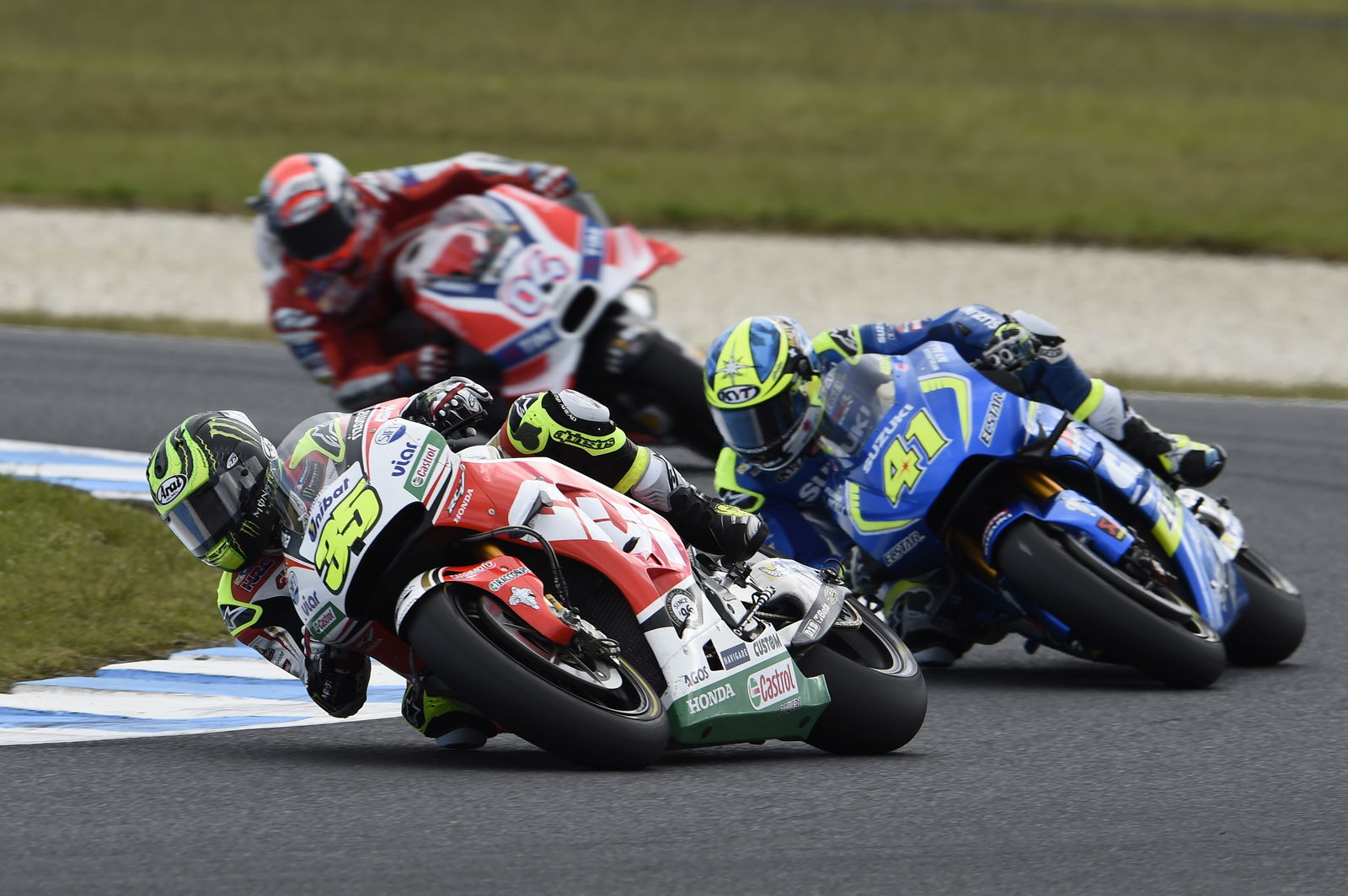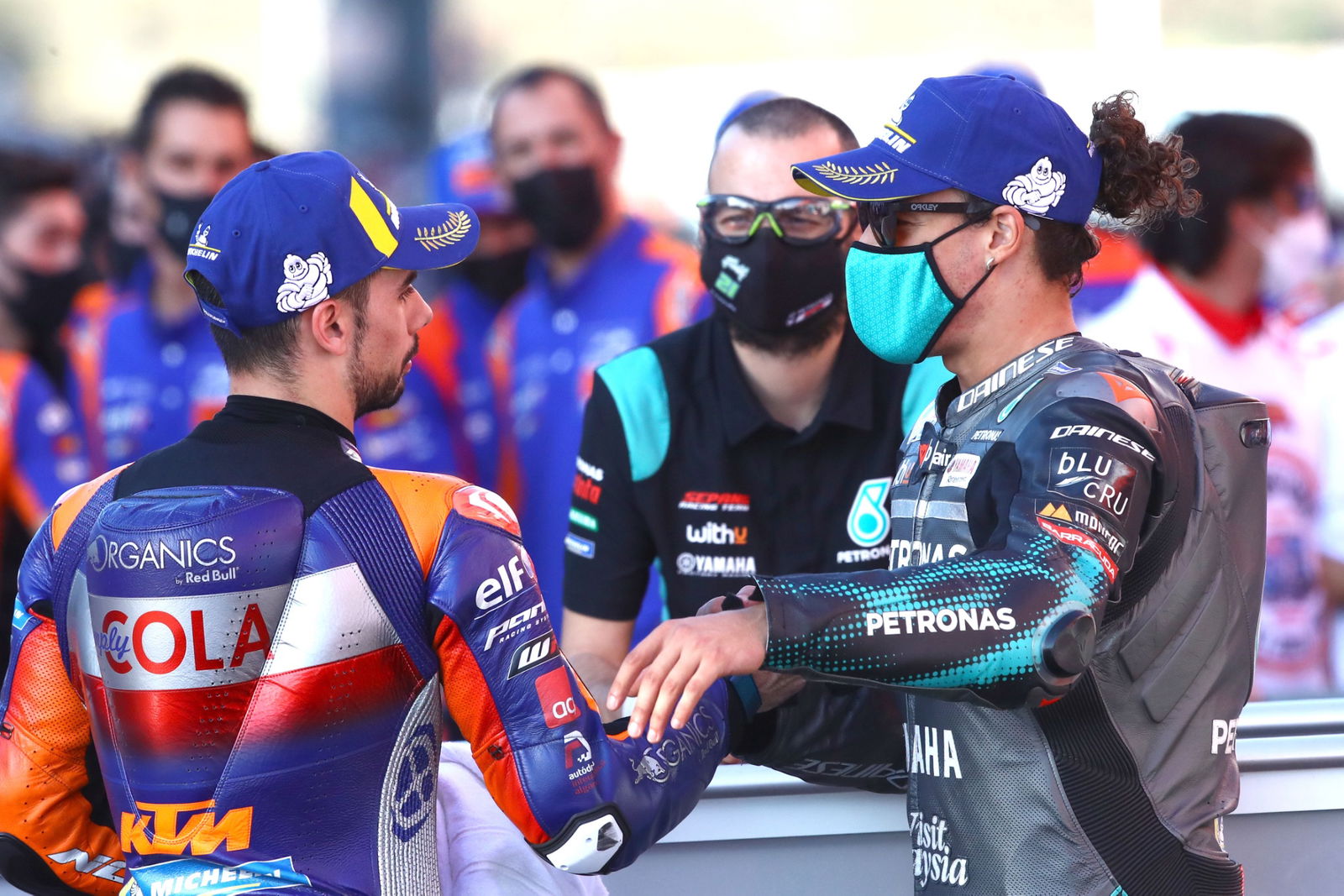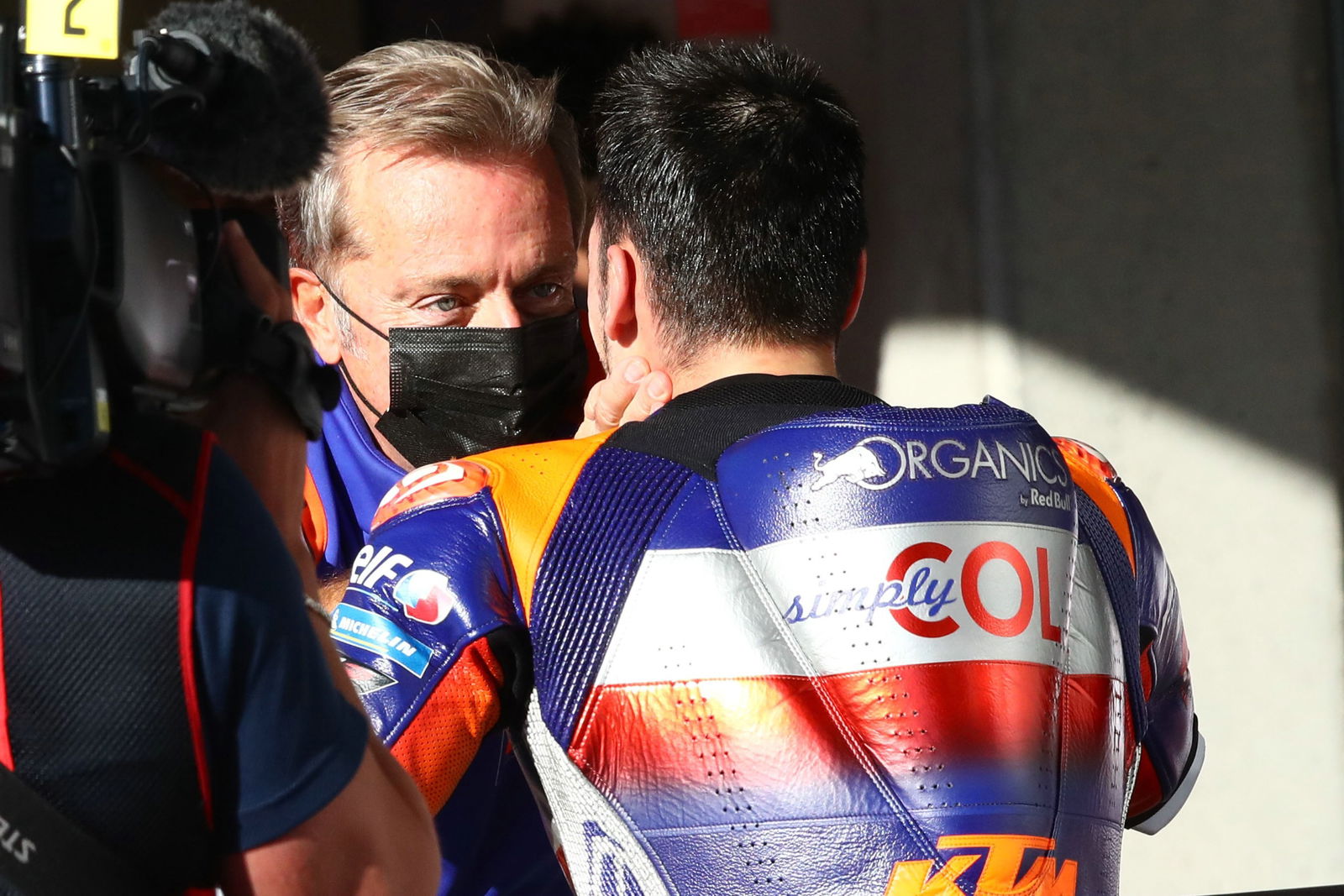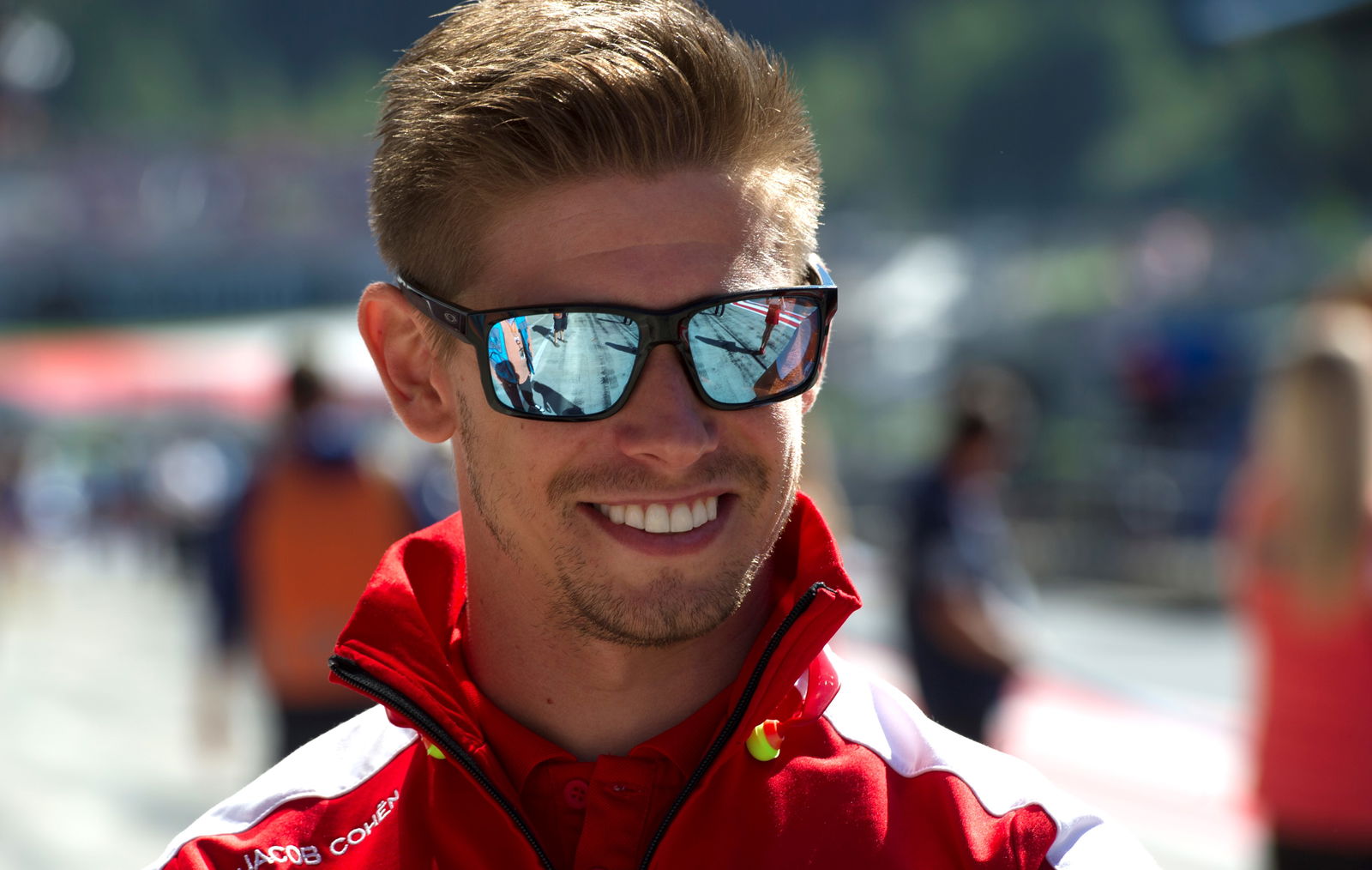Is there such a thing as a "satellite team" in MotoGP anymore?
.jpg?width=1600&aspect_ratio=16:9)
We almost missed it but the final round of the 2020 MotoGP World Championship season threw up an interesting little stat in Portimao; the podium - comprising Miguel Oliveira, Jack Miller and Franco Morbidelli - was the first all-satellite rider top three since 2004.
And yet, perhaps the most surprising thing about this stat is not that it occurred, but that it hasn’t happened sooner.
You only need to glance over the final classification - 14 races, nine race victors, 15 podium winners - to recognise the strength in depth of MotoGP today. The reasons are multiple - a successful equalising formula that pins the difference between pole to tenth to less than 0.5s and effective Moto2/3 proving grounds to name but two - but the biggest shift in recent years has been the weaponised role a satellite team now plays in a factory effort’s armoury.
The 2020 MotoGP World Championship Visualiser
As such, Petronas SRT and Tech 3 were victorious in 2020 - the latter achieving its feat for the first time after more than 20 years in the sport - while Pramac and LCR were never far from the top either, just as they have been in previous seasons.
“It is better for the show and it helps the natural growing up of the level process from the old championship when the factory riders were just above the satellite riders,” said Franco Morbidelli, who finished as top satellite rider on ‘B/A- spec’ Petronas SRT Yamaha machinery in second overall.
“In MotoGP, the factory riders are always consistently trying to get their wheels in front of the satellite riders and the satellite riders are constantly trying to show their potential to the factory guys.
“It helps the growth of the level, riders will train better, focus more, will care about details more because the competitiveness of the championship is greater.”
With Honda going ‘full spec’ across its four bikes in 2021, Aprilia set to run four bikes from 2022 and Suzuki annually tipped to finally add a second effort, the MotoGP satellite has travelled a long way in a few short years.

Is there such a thing as a ‘satellite team’ in MotoGP now?
Pedants among you will point out that, yes, satellite teams will continue to exist in the purest definition of the term - ie. a second team in addition to a primary one - but the question is posed in the context of whether it is more accurate to classify them as four factory bikes across two teams.
Indeed, it hasn’t always been like this. While the platform of a satellite team has existed for many years, it was largely an arm’s length association bonded to the factory by a desire to trial protégé riders or to house wealthy journeymen swelling the coffers, always on one or two year old machinery.
It was Honda that proceeded to go against the grain by supplying spec-machinery to Cal Crutchlow in the LCR team, who then went on to win the 2016 Czech MotoGP in Brno. Emerging from an era in which the disparity between factory and satellite bikes could be measured at around a second per lap - and established the front runners of Valentino Rossi, Casey Stoner et al. as ‘aliens’ - Crutchlow’s win showed the value in having three bikes on track bringing data in.
Quickly all the manufacturers had at least one current-spec MotoGP machine in their satellite offshoots, only for KTM to raise the stakes further in 2019 by supplying spec machinery to both its Factory and Tech 3 customers, even if the RC16 then was only moderately competitive.
Ducati followed suit in 2020 with Miller and Pecco Bagnaia on the GP20, while Yamaha’s ‘fourth-string’ bike for Morbidelli is effectively a hybrid marrying a 2019 platform with 2020 innovations. Having started the trend in the first place, Honda will now supply two 2020 RC213Vs to LCR in 2021.
While issues with parts development meant KTM’s ‘identical machinery’ pledge to Tech 3 - the primary reason why it ended a long and fruitful relationship with Yamaha - wasn’t really applicable until 2020, Oliveira’s second win of the season and KTM’s third is indicative of how the four ‘factory’ bike approach can make an impact.
Before Crutchlow, it was Miller that ended the drought of a race-winning satellite riders with his success in the 2016 Assen TT, albeit on a year-old Honda. Having spent six seasons with satellite teams, ahead of his Ducati Corse switch in 2021, the Australian believes the change in ethos has brought a huge benefit to both the teams and the fans.
“I have been fortunate enough to have been through a few eras of the satellite team, there was the Honda CRT back in the day (2015). I was the one that broke the drought of 10 years [winning in Assen as a satellite rider], sitting here today with three of us on the podium, you wouldn’t have dreamed about it.
“First of all it was Honda with Cal to give him factory equipment, then it was Ducati with Danilo and Scott, whoever won between them got the factory bike. Now every manufacturer has stepped up their support. Now we have three guys here on the podium in non-factory teams, it is amazing to see how far MotoGP has grown since I’ve been here.
“I hope in the future we can have more, it is great to see guys performing in their rookie season. Franco [Morbidelli] has been in the same position as me on old equipment doing the best you can do, now with a little bit more support the results come.”

Will it always remain like this?
This depends on whether the suits at Honda, Yamaha, Ducati et al. treat the satellite teams as beneficial extensions of their factory efforts or see them as a potential for embarrassment. After all, if you’re - for instance - a boss at Monster, will you be delighted to see the Yamaha Factory team you pay top dollar to sponsor being comfortably out-performed by Petronas SRT?
So there may be examples of intentional gapping to firmly establish A and B but - 19 years after Rossi clinched his first premier class title on the Nastro Azzurro Honda - Oliveira’s thinks the blurred lines between what you’d describe as a factory and satellite team mean history will repeat before long.
Expecting the light freeze on development for 2021 to benefit the likes of Tech 3 - whom he is leaving for a Factory KTM ride next season - Oliveira anticipates 2021 could in fact be the year.
“It really depends on how constructors build the bikes and the business around the teams. It is possible to have the same material provided by a factory team and then it is up to the riders to do their jobs.
“Of course, it is not a surprise that in the future we could have a satellite team world champion but it really depends on how the teams approach everything.
“I don’t see a reason why satellite teams cannot perform better, especially next year when we will not have major development on bikes and the experience gained this year will be fine-tuned.”
Instead, of teams attempting to define its factory and satellite teams, the upcoming new cycle of contracts from 2022 is instead more likely to add rather than take away by including de facto a third string ‘Avintia-style’ effort.
A pure privateer up until 2020 when it was elevated to ‘second satellite status’, Avintia harks back to the old days of satellite entries - Johann Zarco performing well on a year-old bike, but Tito Rabat very much on aged equipment.
From 2022, we could see Yamaha and Honda add to their roster by interested parties and will perhaps be viewed as a location for up and coming riders.
By then though we could already have a satellite team and rider wrapping up the MotoGP world title in 2021… even it’s essentially ‘satellite’ in name and colours only,
Then again, amid all of this, let’s not forget the 2020 MotoGP World Championship was one by Suzuki, a team that has seemingly benefited from focusing on just getting two bikes right. Perhaps that is the way forward instead...

